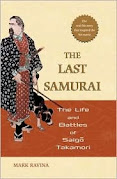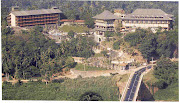Europe and the Indo-European Languages From the desk of Fjordman on Fri, 2008-06-13 21:35
"The Sanskrit language, whatever be its antiquity, is of a wonderful structure; more perfect than the Greek, more copious than the Latin, and more exquisitely refined than either, yet bearing to both of them a stronger affinity, both in the roots of verbs and in the forms of grammar, than could possibly have been produced by accident; so strong indeed, that no philologer could examine them all three, without believing them to have sprung from some common source, which, perhaps, no longer exists: there is a similar reason, though not quite so forcible, for supposing that both the Gothic and the Celtic, though blended with a very different idiom, had the same origin with the Sanskrit; and the Old Persian might be added to the same family, if this were the place for discussing any question concerning the antiquities of Persia."As the linguist Trautman has later said, "The modernity of the formulation is remarkable: the grouping of Sanskrit, Greek, Latin, Gothic (Germanic), Celtic, and Old Persian; their mutual resemblance in lexicon and grammar; the conception of their relationship as co-descendants of a lost ancestral language – these are exactly the views historical linguists hold today."
Jones was obviously not the first person to notice that various languages showed signs of being related. This was suspected by other scholars before him. But he was the first to connect European languages to non-European ones in this way. According to Nicholas Ostler in Empires of the Word:
"The majority of IE languages currently spoken belong to six large sub-groups of IE. Modern Irish and Old Irish are members of the Celtic sub-group, which also includes Welsh, Scots Gaelic, Breton, Cornish and Manx. Sinhala is part of the large Indic family, comprising most of the languages currently spoken in North India and Pakistan, Sanskrit and the Middle Indian Prakrits. English is a member of the Germanic branch; this includes Dutch, German and the Scandinavian languages among living languages, as well as earlier stages of these languages, such as Old English, Old High German and Old Norse, and other extinct varieties such as Gothic, once spoken in south-east Europe and southern Russia. The other large sub-groups are Romance and Slavic in Europe, and Iranian in Asia. All of these sub-groups of IE were themselves recognised as linguistic families before Jones' identification of the larger IE family cited above."To read the complete article click this link: Europe & the Indo-European (IE) Lanaguages









































































































0 Comments:
Post a Comment